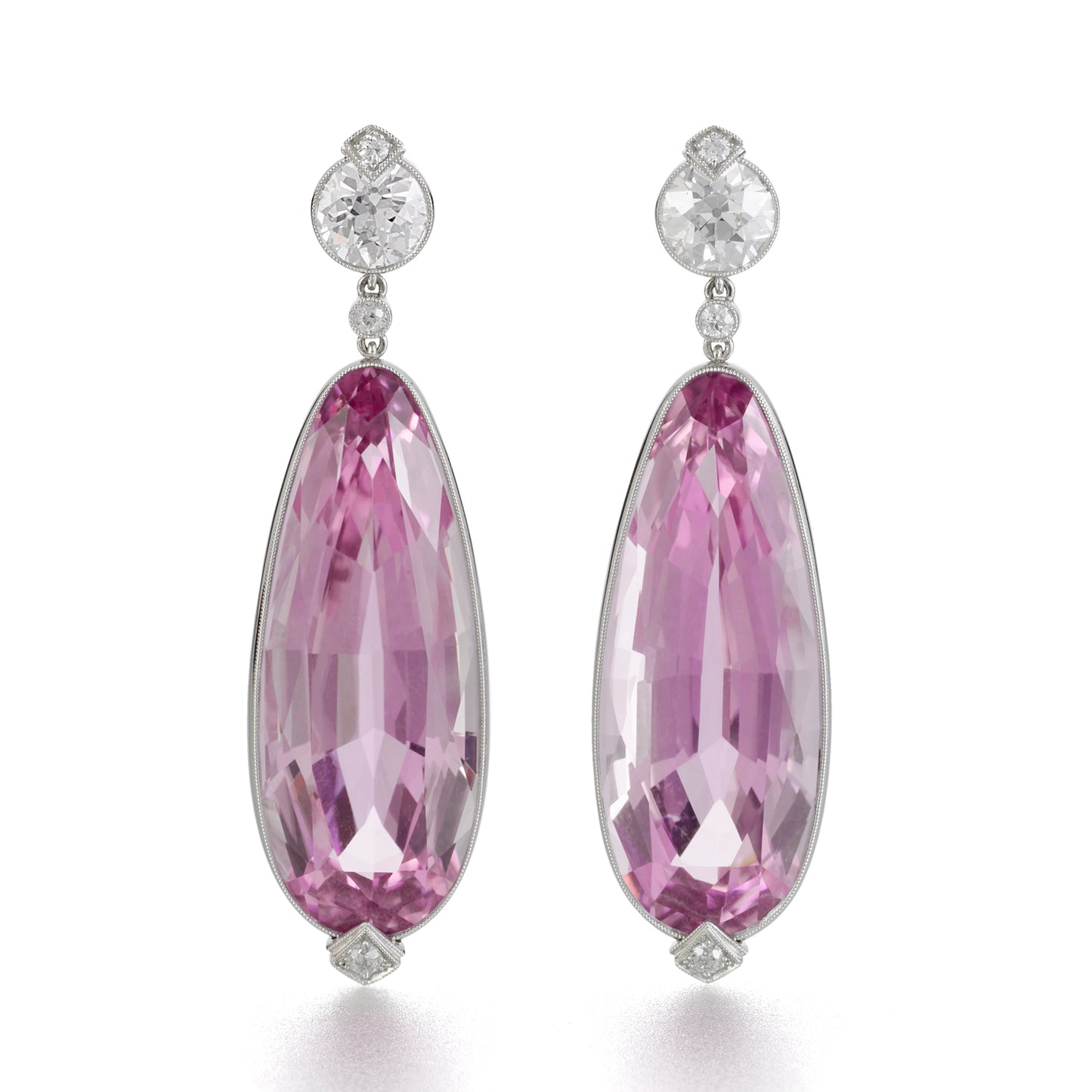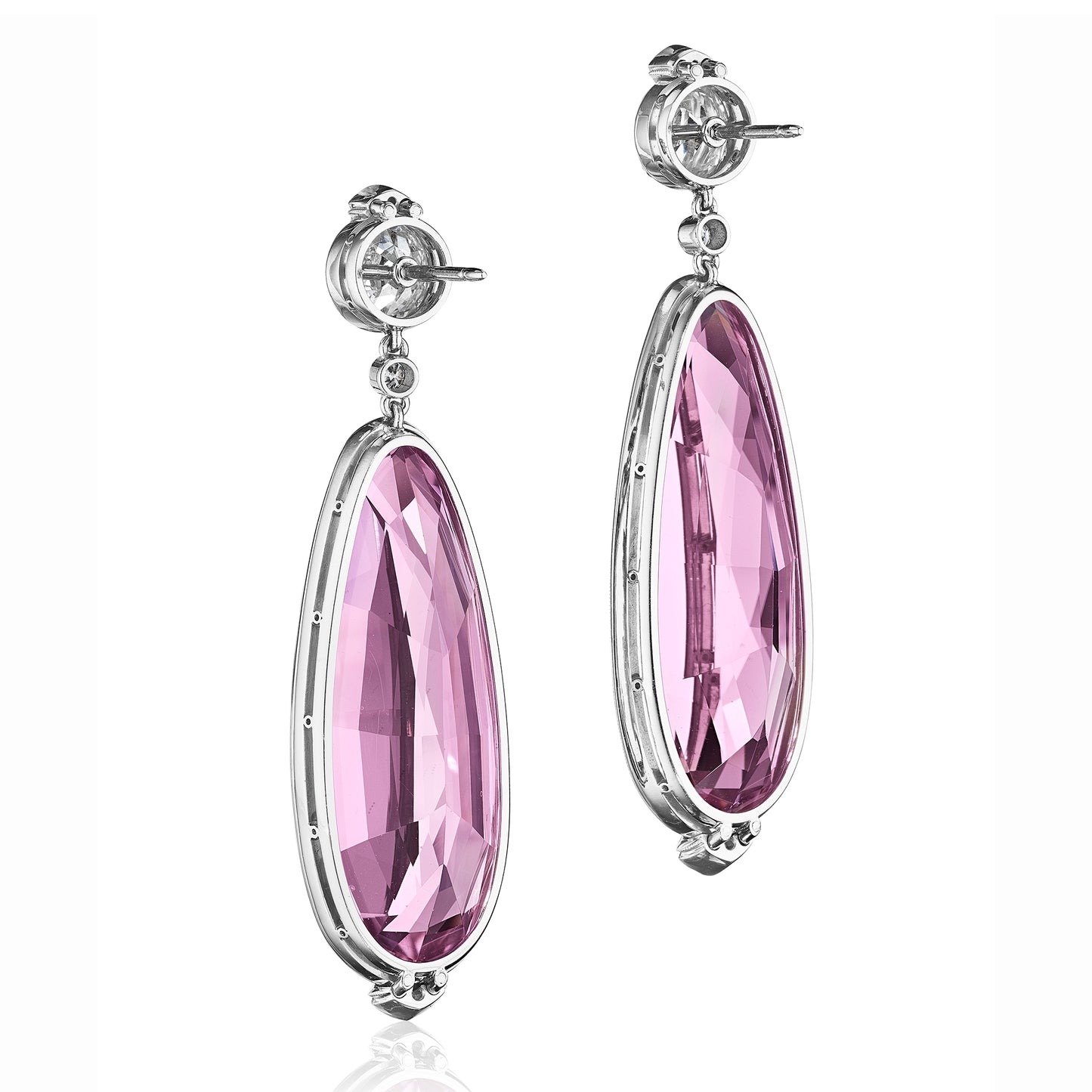Pair of Kunzite and Diamond Ear Pendants by Siegelson, New York
Pair of Kunzite and Diamond Ear Pendants by Siegelson, New York
A pair of ear pendants, each articulated earring designed with a round brilliant-cut diamond stud, surmounted by a full-cut diamond, suspending a full-cut diamond and a bezel-set pear-shape kunzite, terminating with a full-cut diamond, each stone in a millegrain setting; mounted in platinum
- 2 pear-shaped kunzites, weighing 39.39 and 39.41 carats
- 2 round brilliant-cut diamonds, weighing 1.53 and 1.33 carats
- 6 full-cut diamonds, total weighing 0.21 carat
- Measurements: 2 3⁄16 × 5⁄8 inches
Additional cataloguing
Significance
Although the gems are thousands of years old, kunzite was only discovered in 1902 at a Pala Mountain mine in California. A sample was sent to George Frederick Kunz, gemologist and gem buyer for Tiffany & Co., who pronounced it a specimen of the “extinct spodumene,” a lithium aluminum silicate. Fellow gemologist Dr. Charles Baskerville named the stone kunzite in honor of Kunz’s services to the scientific world in gemology. From the first decade of the twentieth century until today, Tiffany & Co. has set this stone into important jewelry including a 396.3-carat kunzite mounted into a necklace designed by Paloma Picasso in 1986 and given to the Smithsonian Institution by Tiffany in 1987 in celebration of their 150th anniversary.
Kunzite is a precious, clear, and transparent variety of spodumene with a considerable range of tints including shades of deep rosy lilac, rich deep pink purple, and deep pink, caused by trace impurities of manganese. It is highly fluorescent and phosphorescent. The ideal gemstone is flawless and of a decidedly pink shade. Today, most kunzite is mined in Brazil, Afghanistan, and Madagascar and it remains a very rare gemstone.
Museums have acquired important examples of kunzite. Along with the Tiffany necklace, the Smithsonian acquired an 880-carat heart-shaped kunzite from Brazil, while the American Museum of Natural History in New York has collected two stones from Pala, California, one weighing 121.48 carats and the other 191.84 carats. Another important kunzite is set into an interchangeable center created for the Duchess of Gloucester’s Honeysuckle Tiara. The beautiful and adaptable tiara was made for Queen Mary by E. Wolff & Co. for Garrard and was intended to fit three possible center stones, the Cullinan V, a sapphire and diamond ornament, and the diamond and kunzite ornament in a riotous shade of pink.





